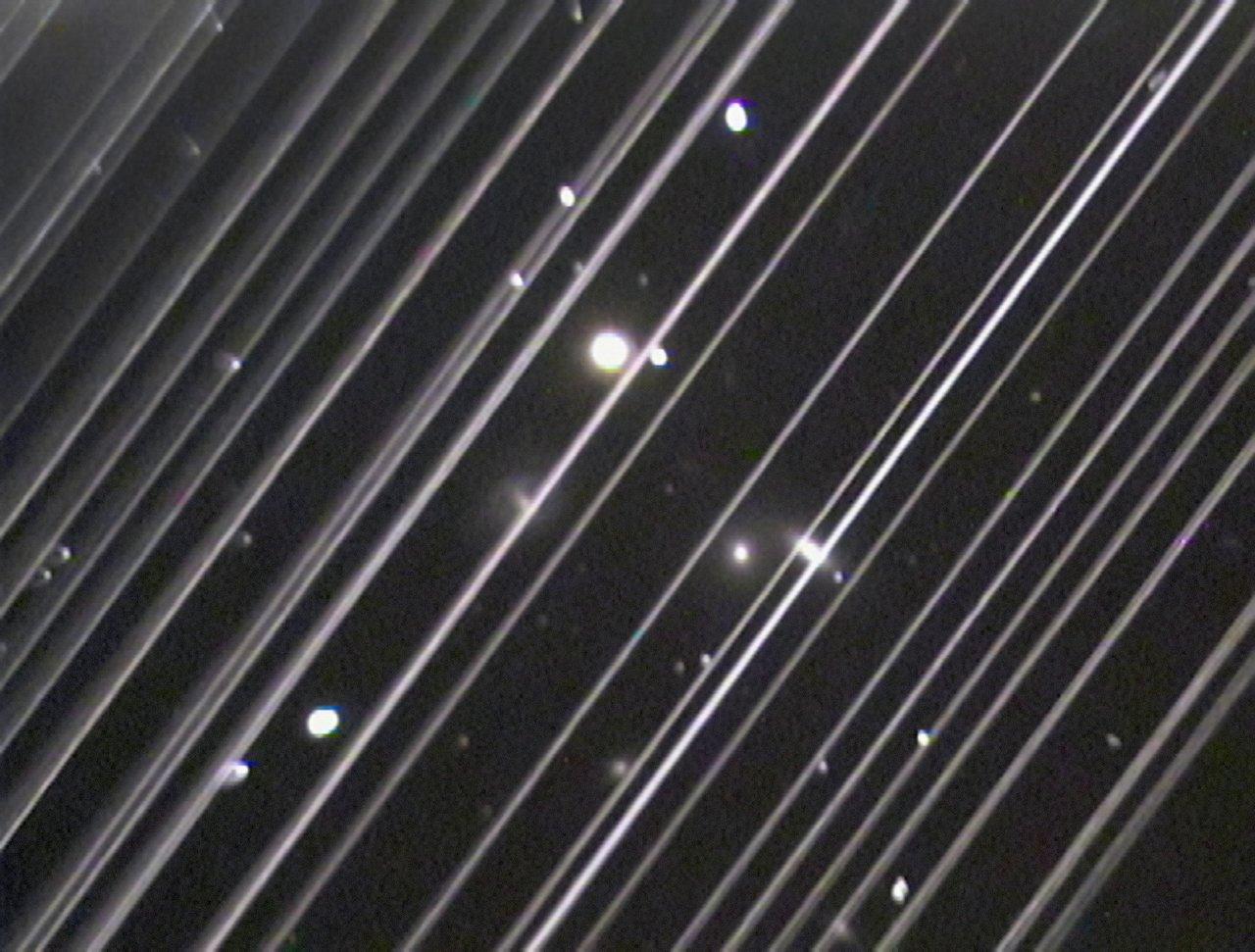Astronomers give urgent warning over Elon Musk's attempt to fill the night sky with satellites
'I, like many astronomers, am very worried about the future of these new bright satellites'
Your support helps us to tell the story
From reproductive rights to climate change to Big Tech, The Independent is on the ground when the story is developing. Whether it's investigating the financials of Elon Musk's pro-Trump PAC or producing our latest documentary, 'The A Word', which shines a light on the American women fighting for reproductive rights, we know how important it is to parse out the facts from the messaging.
At such a critical moment in US history, we need reporters on the ground. Your donation allows us to keep sending journalists to speak to both sides of the story.
The Independent is trusted by Americans across the entire political spectrum. And unlike many other quality news outlets, we choose not to lock Americans out of our reporting and analysis with paywalls. We believe quality journalism should be available to everyone, paid for by those who can afford it.
Your support makes all the difference.Elon Musk's attempt to fill the night sky with vast numbers of satellites could block out the stars and hamper vital scientific research, astronomers have warned.
Mr Musk's company, SpaceX, recently launched a fleet of 60 communications satellites into the air to float around the Earth. The company hopes that they and many more to be launched in the future will power fast internet connections that will enable people around the world to get online.
SpaceX had said that the objects would be barely visible at all.
But as soon as that launch was complete, people spotted the mysterious shiny objects flying through the night sky, as bright as the stars. Some even reported UFO sightings, fearful of what they thought they were seeing.
Now the American Astronomical Society has together warned the world that the satellites could pose a considerable risk to people on the ground and in the sky. Such constellations could eventually outnumber the visible stars in the sky, the astronomers said, with tens of thousands of the objects planned to be launched.
If companies are able to launch such vast constellations of satellites, they could stop important astronomical research by blocking out signals coming from further out in space, the scientists warned. The light being sent from the satellites as well as bouncing off them could stop astronomers seeing light from space, and the radiation coming out of them could get in the way of radio emissions.
What's more, the satellites are at risk of smashing into space-based observatories, which could cause chaos in near-Earth orbit.
The group shared an image that showed how the trails formed by the satellites could ruin photos as they flew past.

The society said it was excited by the possibility of new ways of connecting the world, and that it recognise that space was an increasingly important resource. But the world needs to do more to ensure that those using it don't pollute the night sky and harm astronomers and the general public.
"“The American Astronomical Society notes with concern the impending deployment of very large constellations of satellites into Earth orbit," it said in a new statement adopted during its most recent meeting. "The number of such satellites is projected to grow into the tens of thousands over the next several years, creating the potential for substantial adverse impacts to ground- and space-based astronomy. These impacts could include significant disruption of optical and near-infrared observations by direct detection of satellites in reflected and emitted light; contamination of radio astronomical observations by electromagnetic radiation in satellite communication bands; and collision with space-based observatories.
“The AAS recognizes that outer space is an increasingly available resource with many possible uses. However, the potential for multiple large satellite constellations to adversely affect both each other and the study of the cosmos is becoming increasingly apparent, both in low Earth orbit and beyond.
“The AAS is actively working to assess the impacts on astronomy of large satellite constellations before their numbers rise further. Only with thorough and quantitative understanding can we properly assess the risks and identify appropriate mitigating actions. The AAS desires that this be a collaborative effort among its members, other scientific societies, and other space stakeholders including private companies. The AAS will support and facilitate the work by relevant parties to understand fully and minimize the impact of large satellite constellations on ground- and space-based astronomy.”

Join our commenting forum
Join thought-provoking conversations, follow other Independent readers and see their replies
Comments